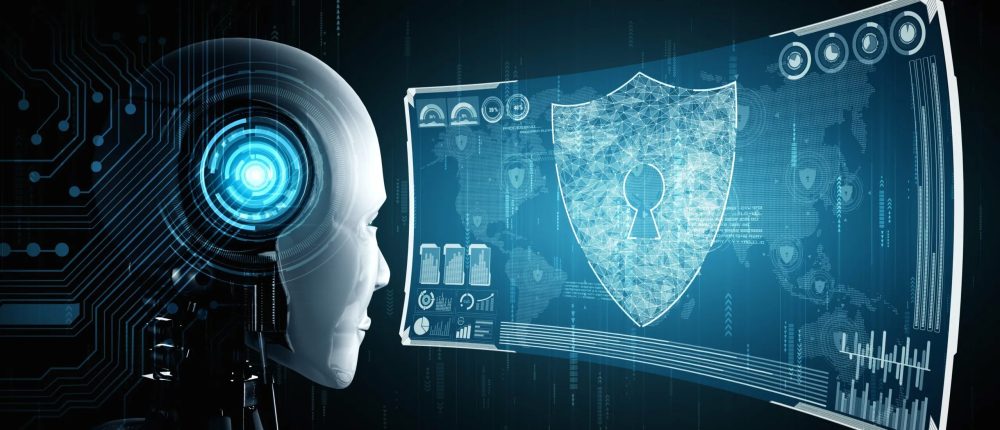The New Frontier in Cybersecurity
Cybersecurity threats are more relentless and complex than ever. Gone are the days when firewalls and antivirus software were enough. Businesses now face everything from ransomware to deepfake social engineering attacks. Traditional tools are reactive—they deal with threats after they happen.
AI flips that script.
Artificial Intelligence, especially machine learning, is making it possible to predict, prevent, and respond to attacks faster than any human team ever could. It’s no surprise that cybersecurity AI is projected to reach $46.3 billion by 2027 (Statista).
And AI’s utility goes beyond just security. Just like marketing teams use tools such as Spynger to track location data and improve communication performance, businesses can use AI to optimize internal security workflows. Tracking apps used wisely in marketing help paint a clear picture of audience behavior—and AI does something similar for threat patterns.
Accelerated Threat Detection
Speed matters in cybersecurity. AI doesn’t sleep, get tired, or overlook red flags. While a human analyst might take hours to notice a breach, AI can do it in seconds. Machine learning models are trained to look for behavioral anomalies across enormous datasets.
Think of it this way: if your network traffic suddenly doubles at 3 a.m., AI flags it—while legacy systems might just log it. Even more impressively, unsupervised learning models can detect unknown attack types. These are attacks no one has seen before.
The biggest advantage? AI doesn’t rely on signatures or rules—it learns from behavior. That means you’re not just catching known viruses; you’re intercepting anything that looks suspicious, even if it’s brand-new.
Predictive Breach Prevention
AI is like having a digital crystal ball. It doesn’t just sound the alarm when something’s wrong—it can tell when something might go wrong. Predictive models analyze everything: past incidents, employee activity, software configurations, even external threat reports.
If an employee suddenly logs in from a different country, accesses unusual files, and downloads data—AI pieces that together instantly. A human might miss the pattern or connect the dots too late.
This proactive approach makes breach prevention smarter and more dynamic. Instead of patching up holes after the fact, businesses can reinforce potential weak spots before attackers find them.
Automated Response Mechanisms
Here’s where AI gets even more powerful: it doesn’t just warn you; it can act on its own. Automated response systems handle low-level incidents before they grow into bigger ones. AI can lock a compromised account, isolate a device from the network, or generate an internal report—all within seconds of detecting a threat.
This instant reaction can mean the difference between a minor incident and a PR disaster.
It also lightens the load for IT teams. Instead of fighting fires all day, your security professionals can focus on long-term strategies and investigations, knowing AI has their back for everyday threats.
Empowering Small and Medium Businesses
Small businesses are especially vulnerable. They often lack dedicated IT staff and can’t afford full-time cybersecurity analysts. That’s where AI becomes a game-changer.
You no longer need a massive budget or a 10-person security team. Affordable AI tools provide 24/7 protection, learn from your business’s unique activity, and scale as you grow. Tools like endpoint protection, AI firewalls, and behavioral analytics are more accessible than ever.
Even better? Many solutions integrate with existing systems, so there’s no need for a total tech overhaul. This gives smaller businesses a fighting chance—and makes them less appealing targets for hackers who prey on under-protected networks.
Challenges and Considerations
Let’s be honest: AI isn’t perfect.
It can overreact, flagging false positives and overwhelming teams with alerts. It also raises concerns about data privacy and ethical use—especially when personal data is involved. Transparency in how AI decisions are made is critical.
Moreover, hackers are adapting. They now use AI to develop malware that can evolve and avoid detection. This leads to an arms race between defenders and attackers.
Businesses must keep their AI models updated, trained with diverse data, and backed by human oversight. Automation is powerful, but it works best as part of a layered defense strategy.
The Road Ahead
AI is no longer an emerging trend—it’s the foundation of modern cybersecurity. Businesses that ignore its potential risk falling behind, or worse, falling victim to attacks they could have prevented.
AI helps detect, predict, and neutralize threats faster than any human ever could. But beyond speed, it brings intelligence. It learns, adapts, and scales with your needs. Whether you’re running a startup or a growing enterprise, there’s a place for AI in your security toolkit.
You don’t need to be a tech giant to use smart defense. You just need the right tools—and a forward-thinking mindset. The sooner you start integrating AI, the better protected you’ll be in the digital wild.
Explore Textify’s AI membership
Need Data? Explore the world’s largest Charts database
Explore insights with Textify Analytics
